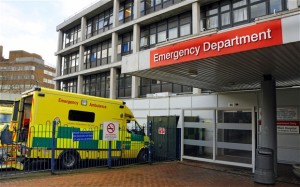Health Secretary Jeremy Hunt outlined radical changes to improve care for vulnerable older people and alleviate pressure on A&E.
Alongside specific plans to support NHS A&E departments in the short-term this winter, the Health Secretary set out proposals to fundamentally tackle increasing pressures on NHS A&E services in the long-term – starting with care for vulnerable older patients with complex health problems.
Fundamental changes mean joined-up care – spanning GPs, social care, and A&E departments overseen by a named GP. Many vulnerable older people end up in A&E simply because they cannot get the care and support they need anywhere else.
These changes will reduce the need for repeated trips to A&E, and speed up diagnosis, treatment and discharge home again, when patients do need to go to hospital.
The facts are clear one in four of us already have a long-term condition and half of all GP appointments and two-thirds of outpatients and A&E visits are now made by patients with multiple long-term health problems.
Overall, the number of people going to A&E departments in England has also risen by 32 per cent in the past decade, and by one million each year since 2010. The over-65s represent 17 per cent of the population, but 68 per cent of NHS emergency bed use. They also represent some of the NHS’s most vulnerable patients, and those most at risk from failures to provide seamless care.
This is why, to support the NHS in the short term, the Government has made an extra £500 million funding available over the next two years. Today, the Health Secretary set out how £250 million would be used by 53 NHS Trusts this winter.
£15 million of this money will also be spent on NHS 111 – to increase the number of clinicians and call handlers so that non-emergency visits to A&E can be avoided.
Flu also has a big impact on the NHS, with on average around 750,000 patients going to their GP with ‘flu symptoms and 27,000 people admitted to hospital as a result of the disease each year.
That is why with Chief Medical Officer Dame Sally Davies, Mr Hunt also announced specific measures to minimise the effects of ‘flu, and flu-related A&E visits in the coming winter months:
Setting out more fundamental long-term changes, Mr Hunt highlighted three key elements emerging as a result of the on-going engagement on improving care for vulnerable older people with complex health problems. Proposals being put together, in order to be rolled out next year include:
The Health Secretary said: “This winter is going to be tough that’s why the Government is acting now to make sure patients receive a great, safe service, even with the added pressures the cold weather brings. But this is a serious, long-term problem, which needs fundamental changes to equip our A&Es for the future.
“In the long term, I want a 24/7 service which recognises patients as individuals and looks out for them proactively. Starting with our most vulnerable, this Government is going to support the NHS in doing exactly that.”
The Health Secretary was supported by senior NHS leaders, and by health minister Norman Lamb, who is specifically overseeing how the £3.8 billion integrated care funding will be used across social services and the NHS.
Care and Support Minister Norman Lamb said: “We want to build a stronger economy and a fairer society. That’s why we recognise the need to join up services around people’s lives so that vulnerable people get better care, closer to home, and the NHS is sustainable for the long term. People shouldn’t fall between the cracks in services, being pushed from pillar to post and not getting the care they need simply because these systems do not work together.
“We have been talking about integrated care between the NHS and social care for years and now the Government has put its money where its mouth is. We have created a £3.8 billion Integration Transformation Fund to make sure everyone gets a properly joined up service in order to get the care they need from whoever is best placed to deliver the NHS or the local authority.
“This can no longer be just an aspiration by joining up service, we will help keep people out of hospital and provide better care.”











